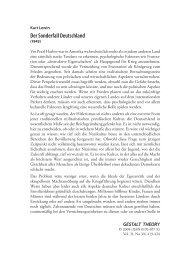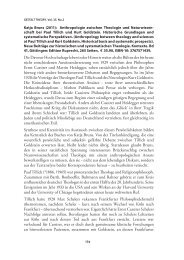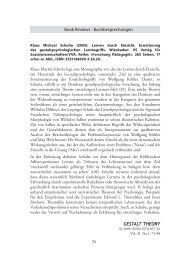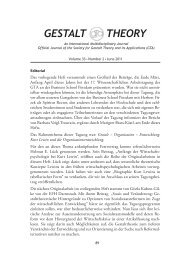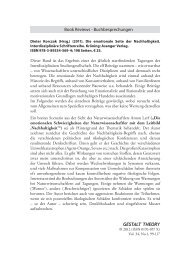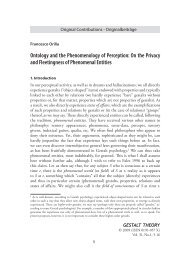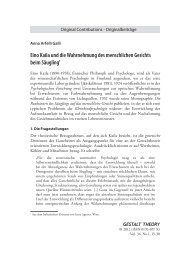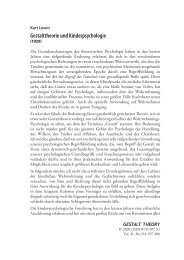What is the Meaning of Shape? - Gestalt Theory
What is the Meaning of Shape? - Gestalt Theory
What is the Meaning of Shape? - Gestalt Theory
You also want an ePaper? Increase the reach of your titles
YUMPU automatically turns print PDFs into web optimized ePapers that Google loves.
411<br />
Pinna, <strong>What</strong> <strong>is</strong> <strong>the</strong> <strong>Meaning</strong> <strong>of</strong> <strong>Shape</strong>?<br />
shown in <strong>the</strong> case <strong>of</strong> <strong>the</strong> squares, through <strong>the</strong> accentuation <strong>of</strong> one component<br />
against <strong>the</strong> o<strong>the</strong>rs in <strong>the</strong> function <strong>of</strong> head, thus favoring <strong>the</strong> emergence <strong>of</strong> <strong>the</strong><br />
headedness shape property. Figs. 19b-e demonstrate that by changing <strong>the</strong> spatial<br />
position <strong>of</strong> <strong>the</strong> small circle <strong>the</strong> organ<strong>is</strong>m changes its shape, appearing each time<br />
as a different creature. The component defined by <strong>the</strong> circle becomes <strong>the</strong> head.<br />
As such, all <strong>the</strong> organic properties change accordingly to what <strong>is</strong> perceived as <strong>the</strong><br />
head, i.e. to <strong>the</strong> headedness property. For instance, <strong>the</strong> organ<strong>is</strong>ms <strong>of</strong> Figs. 19bc<br />
or 19d-e are perceived moving in opposite directions. The limbs appear also<br />
totally different and so on.<br />
0<br />
Fig. 19 Different organic segmentations <strong>of</strong> undulated figures<br />
!"#$%&'()*''!"#$%#&'(#$$"<br />
!"#$%&'%$"(%)(#*&*+%,-%'"#.(/<br />
#<br />
2 (<br />
- +<br />
1





